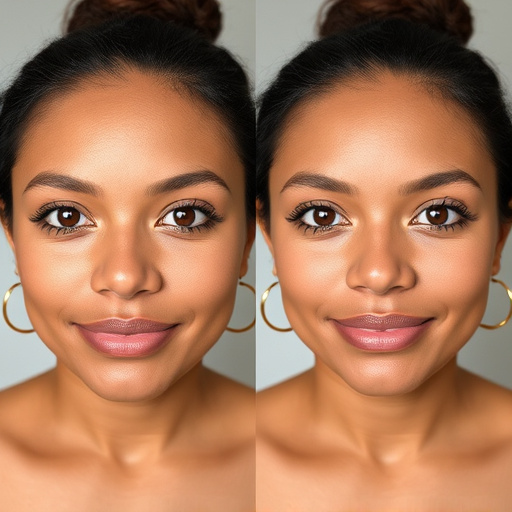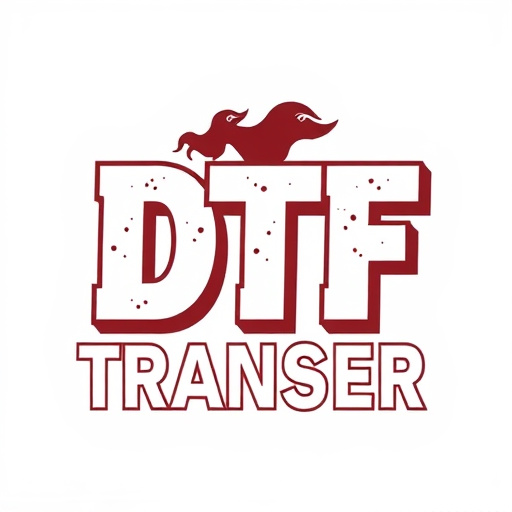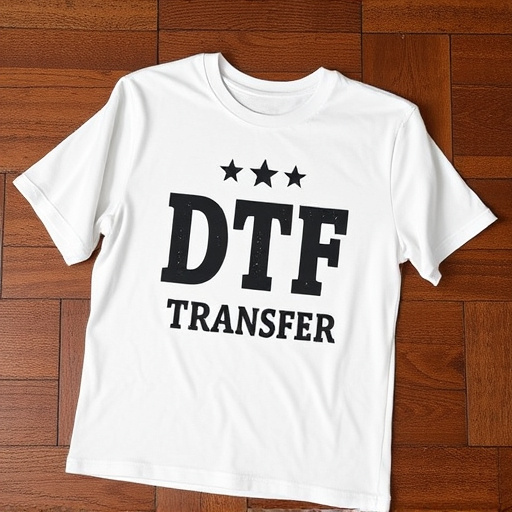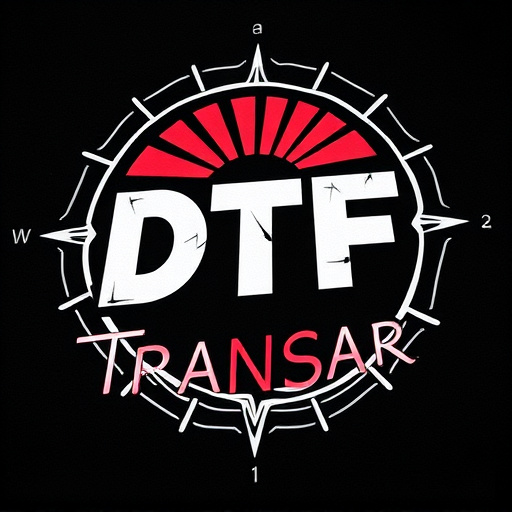DTF (Direct to Fabric) printing is a cutting-edge method for creating vivid, detailed designs on fabric. Using specialized software and heat press machines, the process involves transferring reverse images onto fabric without adhesives. This technique is popular among professionals and hobbyists for its crisp details, vibrant colors, and versatility in applications like custom garments, accessories, and home decor. For warm surfaces, removable DTF transfers offer advantages with their ability to adhere to curves and intricate shapes, enhancing durability and colorfastness. The right material choices ensure superior results, while DTF's efficiency has revolutionized industries from apparel and signmaking to event merchandise.
“Unleash creativity with the versatile DTF (Direct-To-Fabric) transfer technology. This innovative printing method offers a unique twist by allowing transfers designed for warm surface application to be removed while still warm. In this comprehensive guide, we’ll explore the ins and outs of DTF Printing: from understanding its basics to mastering the removal process. Discover the benefits, material choices, applications across industries, and step-by-step instructions for effortless transfer removal.”
- Understanding DTF Transfer: A Brief Overview
- The Process of Designing and Applying DTF Prints
- Benefits of Using Removable DTF Transfers for Warm Surfaces
- Choosing the Right Materials for DTF Printing
- Common Applications of DTF Transfers in Various Industries
- Step-by-Step Guide: Removing DTF Transfers Effortlessly
Understanding DTF Transfer: A Brief Overview
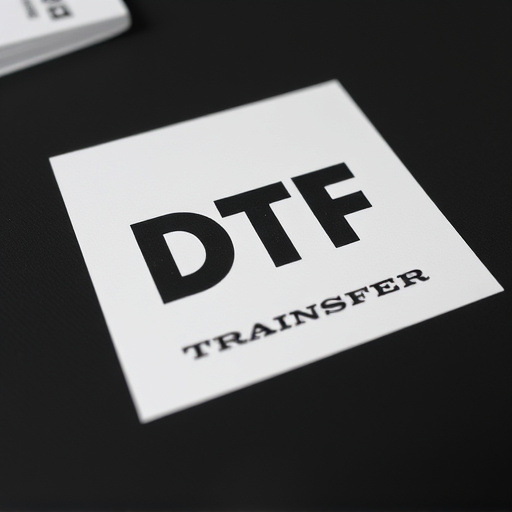
A DTF (Direct to Fabric) transfer is a printing method that allows for the application of designs directly onto fabric while it’s still warm, making it easily removable. This process offers a versatile and efficient way to create custom garments, accessories, or home decor items. The warmth of the fabric during printing ensures optimal adhesive bonding, resulting in vibrant and long-lasting DTF prints.
Understanding the DTF transfer process is crucial for achieving high-quality results. After printing the design onto a special paper using a heat press machine, it’s immediately transferred to the warm fabric. This direct application method eliminates the need for additional adhesives or coatings, making the design easily peelable once cooled. With its ability to produce crisp details and vibrant colors, DTF transfer is a popular choice among professionals in the textile industry and hobbyists alike.
The Process of Designing and Applying DTF Prints

The process of designing and applying DTF (Direct-to-Fabric) prints involves a series of intricate steps that bring digital designs to life on various fabrics. It begins with creating a high-resolution digital design using specialized graphic design software. This design is then prepared for printing, ensuring it meets the required specifications for DTF transfer. The print file is sent to a direct-to-fabric printer, which uses heat and pressure to bond the design onto a release paper, creating a reverse image of the desired DTF transfer.
Once printed, the DTF transfer undergoes a careful cutting process to separate the design from the backing sheet. This precise cutting ensures that only the graphic elements are exposed, ready for application. The end result is a thin, flexible, and easily manipulatable transfer film. Professionals in the textile industry often appreciate DTF prints for their crisp details, vibrant colors, and the ability to produce intricate designs with precision, making it a popular choice for creating custom fabric decorations or revitalizing older garments.
Benefits of Using Removable DTF Transfers for Warm Surfaces
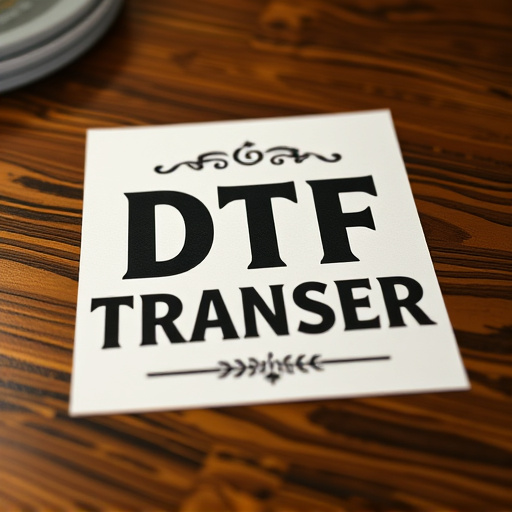
Using removable DTF (Direct to Film) transfers for warm surfaces offers several advantages. One of the key benefits is the convenience it provides during the application process. Since the DTFs are designed to be removed while still warm, they can easily adhere to curved or intricate surface shapes, making them ideal for a range of applications from automotive detailing to home decor. This versatility allows for more creative freedom and ensures a secure fit on diverse materials.
Additionally, removable DTF transfers enhance durability and longevity. The heat application process fuses the transfer to the surface, creating a strong bond that can withstand everyday wear and tear. Moreover, DTFs are known for their vibrant color retention and resistance to fading, ensuring that the prints remain vivid and appealing over time. This quality makes them suitable for both indoor and outdoor use, expanding their practical applications across various industries.
Choosing the Right Materials for DTF Printing

When it comes to designing transfers intended for removal while still warm, selecting the right materials is paramount for achieving exceptional DTF (Direct to Fabric) printing results. DTF Printing offers a versatile method for applying designs to various fabrics, and the choice of material plays a crucial role in ensuring both durability and ease of removal. Opt for high-quality materials that are compatible with DTF transfers, such as heat-resistant papers or specialized DTF films. These materials provide a smooth surface for precise printing and allow for even heat transfer when applied to fabrics.
The right material selection directly impacts the quality of DTF prints. Heat-active substances in the transfer react with the fabric during the heating process, creating long-lasting, vibrant designs. Additionally, consider factors like adhesive strength and release properties to facilitate easy removal without leaving behind residue or damaging the fabric. With the right materials, you can create stunning DTF transfers that are both durable and easily removable, opening up a world of creative possibilities for your printing projects.
Common Applications of DTF Transfers in Various Industries
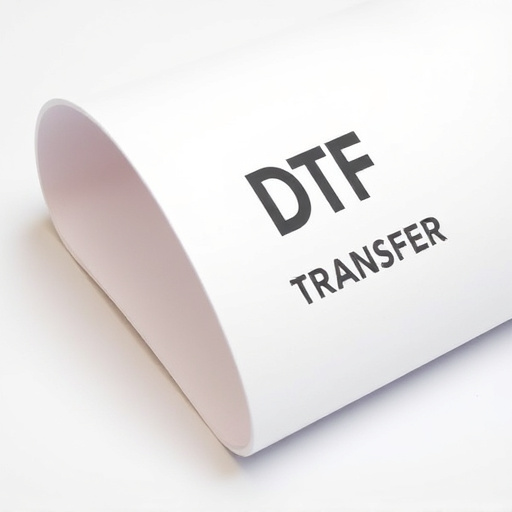
DTF Transfers, or Direct to Fabric transfers, are widely used across various industries due to their versatility and efficiency. In the apparel industry, DTF Printing is a game-changer for small businesses and designers looking to create custom clothing with intricate designs. It allows for detailed prints on a range of fabrics, from cotton tees to polyester jackets, enabling entrepreneurs to offer unique, personalized products without the need for complex machinery or large minimum orders.
Beyond fashion, DTF Transfers find applications in signmaking, allowing businesses to produce high-quality graphics and logos directly onto various materials like vinyl banners, canvas, and even wood. This technology streamlines the production process, making it cost-effective and time-saving. In addition, events and promotions heavily rely on DTF prints for creating customizable merchandise, such as event badges, promotional t-shirts, and branded items, ensuring a memorable experience for attendees.
Step-by-Step Guide: Removing DTF Transfers Effortlessly
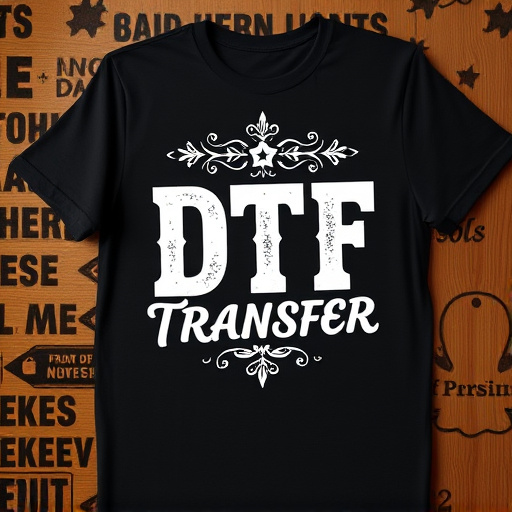
Removing DTF transfers while they’re still warm is a straightforward process when followed correctly. Here’s a step-by-step guide to ensure effortless DTF transfer removal. First, prepare your workspace by setting up a clean, flat surface and gathering necessary tools including a heat gun or hair dryer, a scraper or plastic card, and a damp cloth. Once your print is warm but no longer hot to the touch, begin by gently lifting one corner of the transfer using the tool of your choice. This initial step breaks the adhesion between the DTF print and substrate.
As you lift, apply gentle pressure while pulling the transfer away from the surface in a straight line. Be careful not to tear or scratch the print as this can damage its quality. If the transfer sticks again, reheat it slightly with your heat gun and repeat the process. After successfully removing the DTF transfer, clean the substrate gently using a damp cloth to wipe away any residue. Now, you’re left with a pristine surface ready for your next project or to apply another DTF print.
